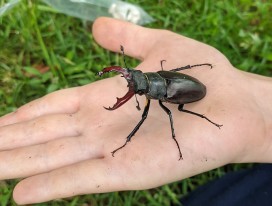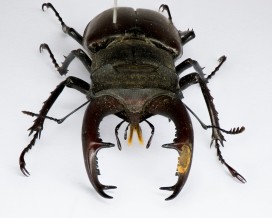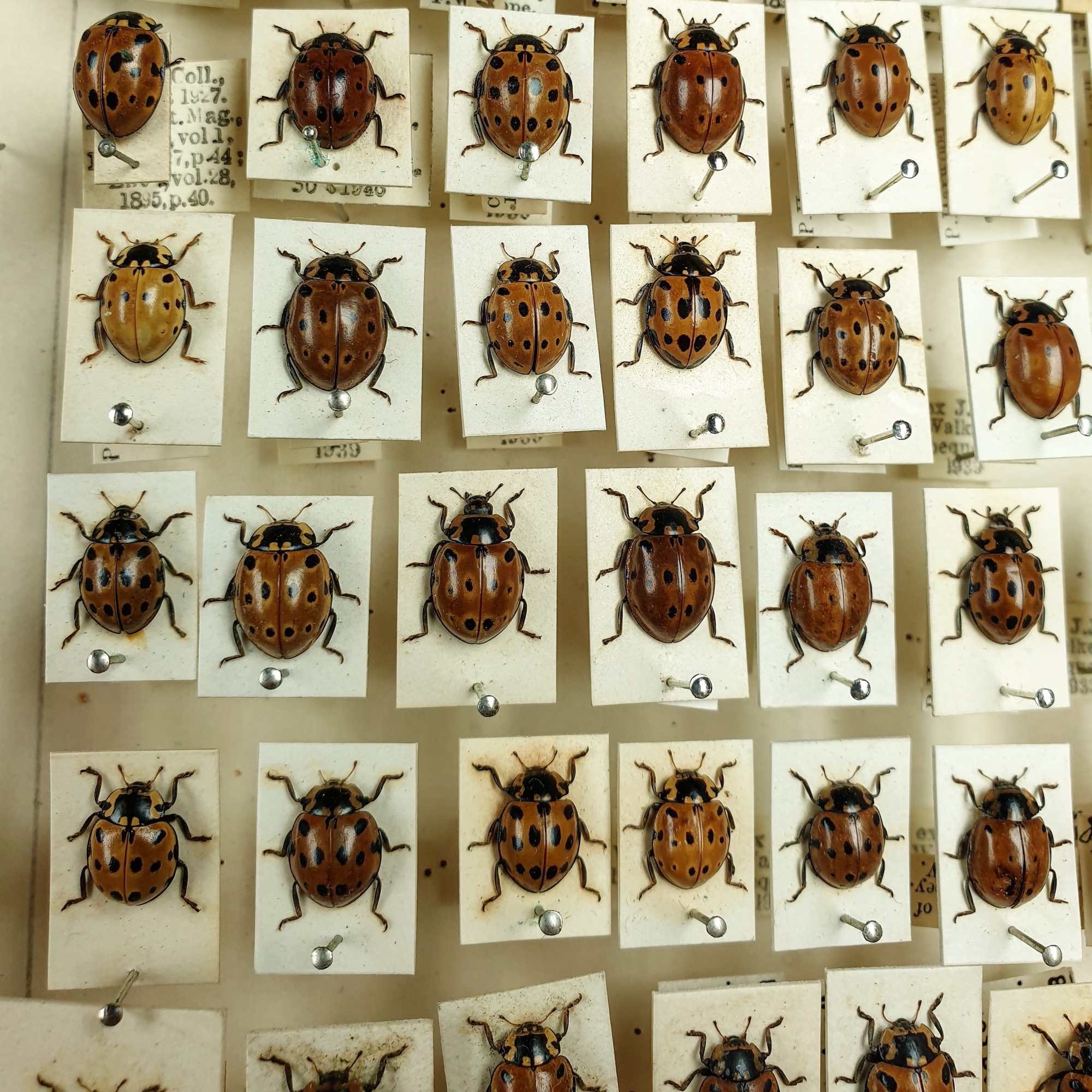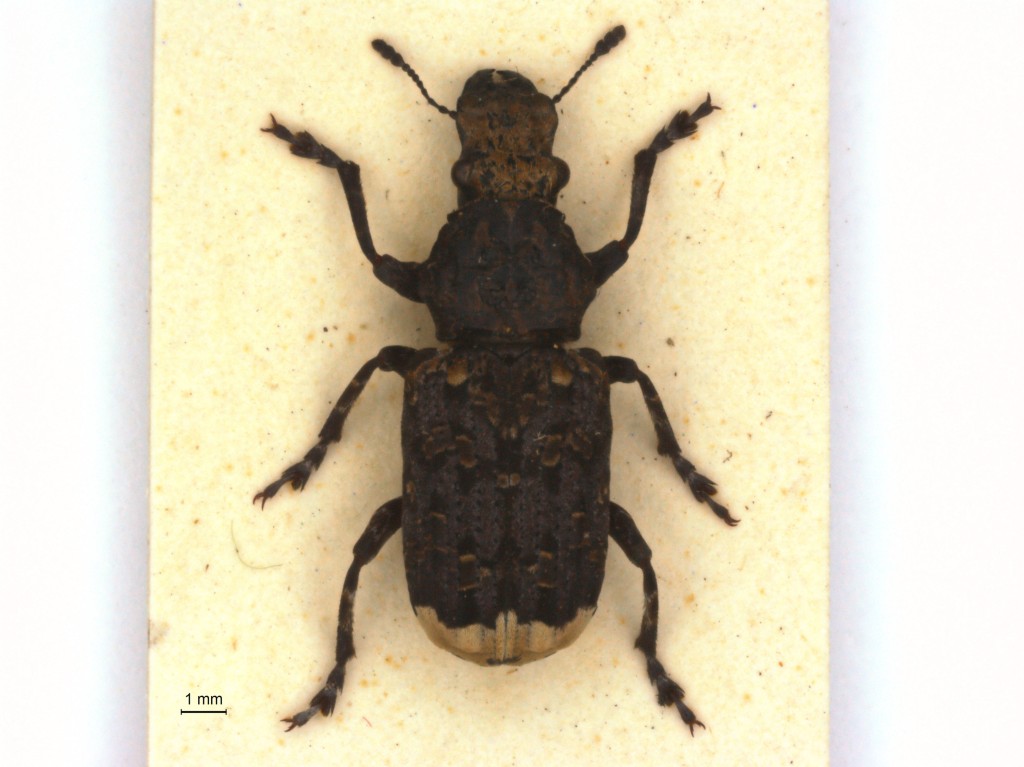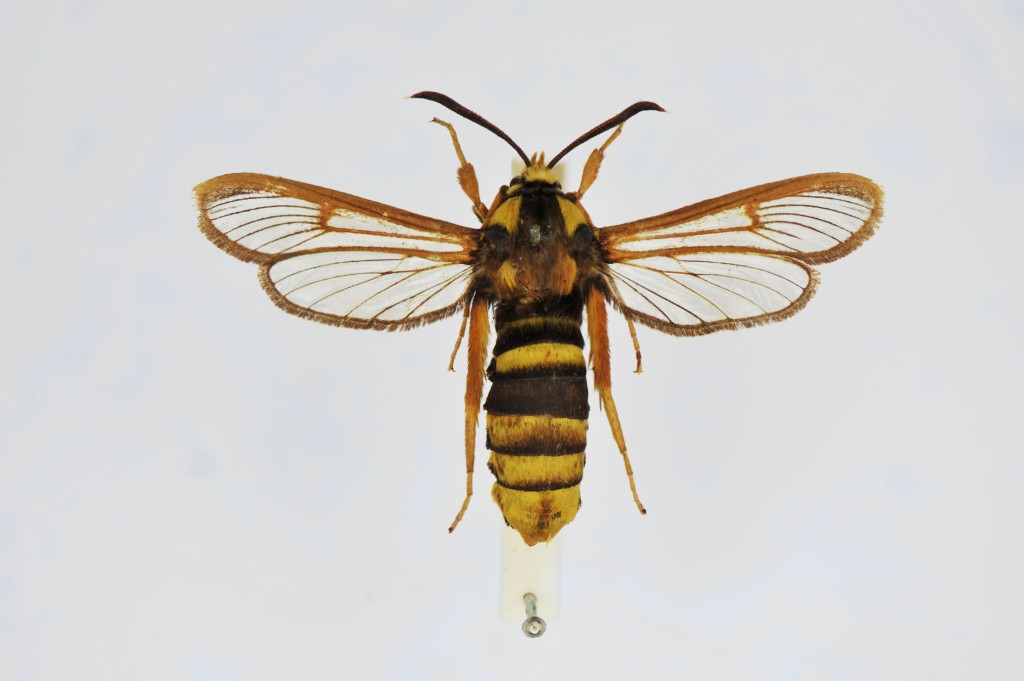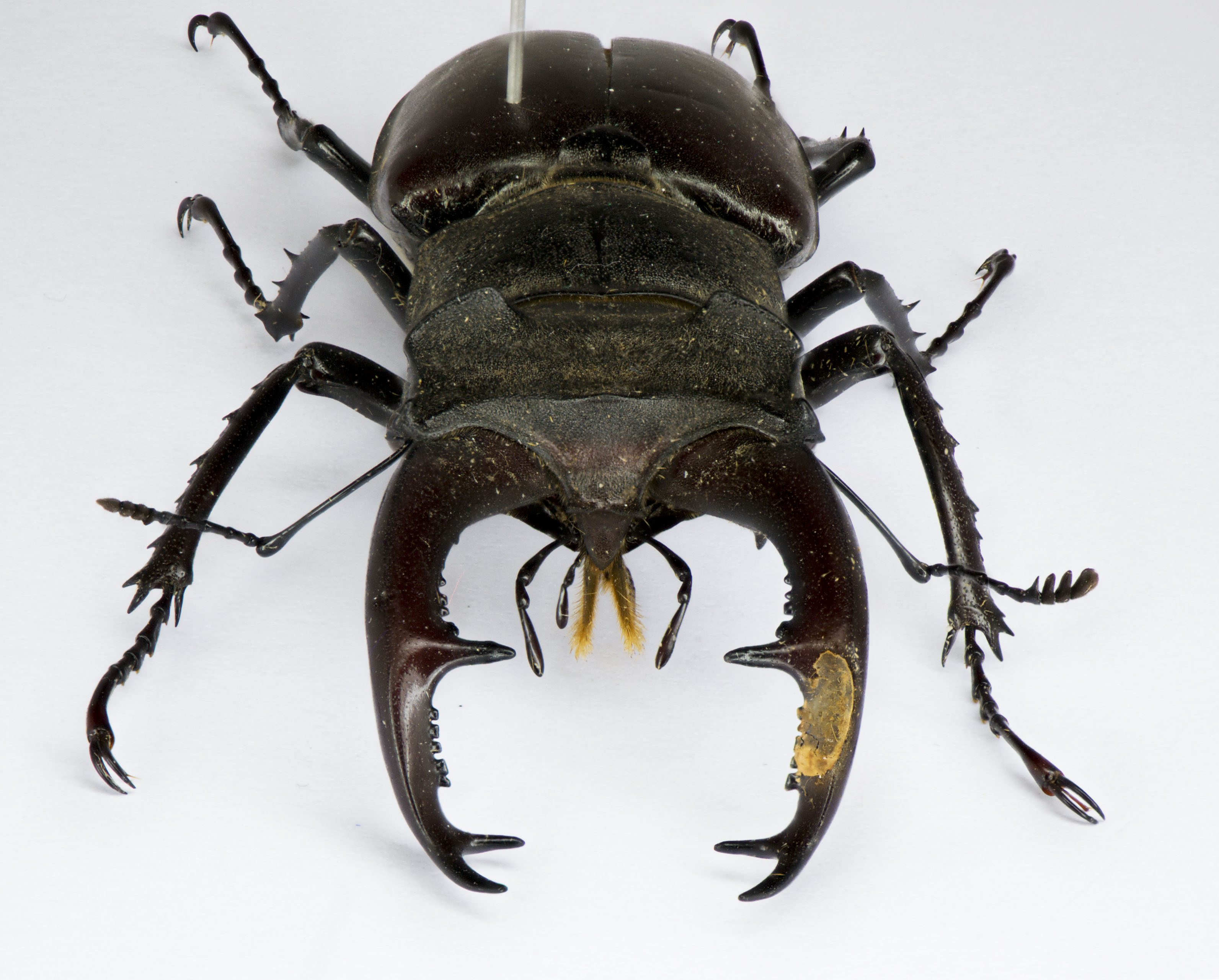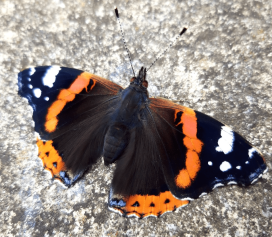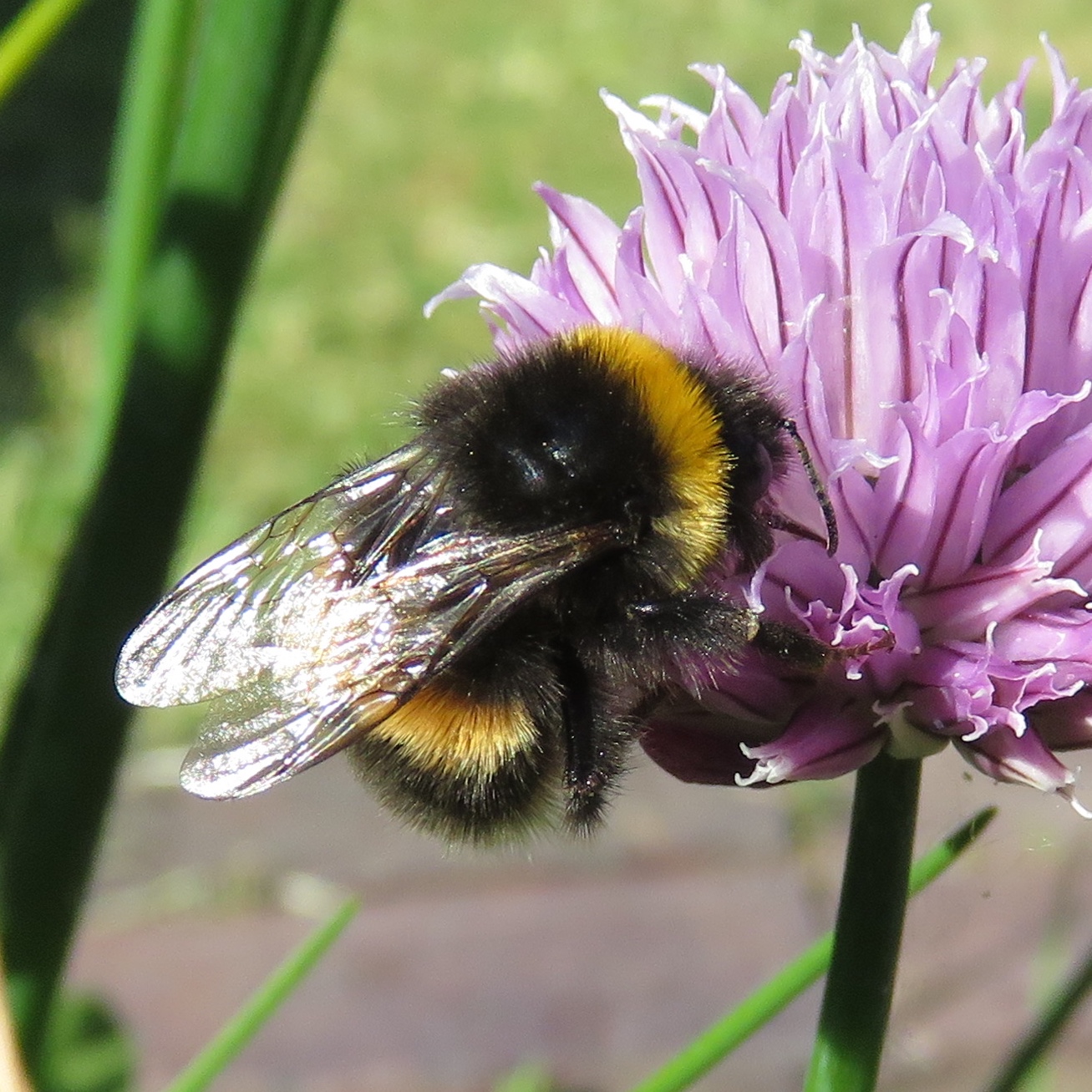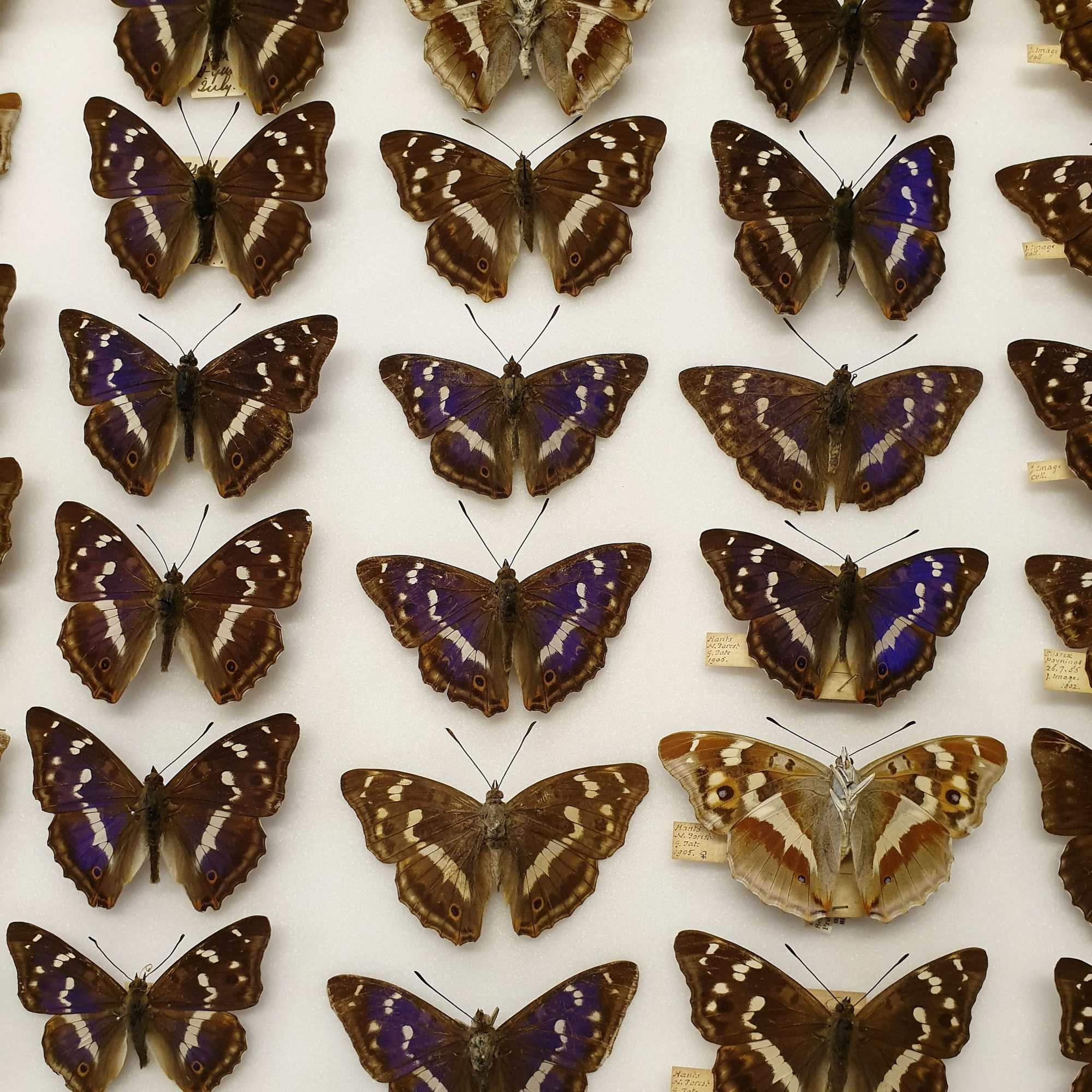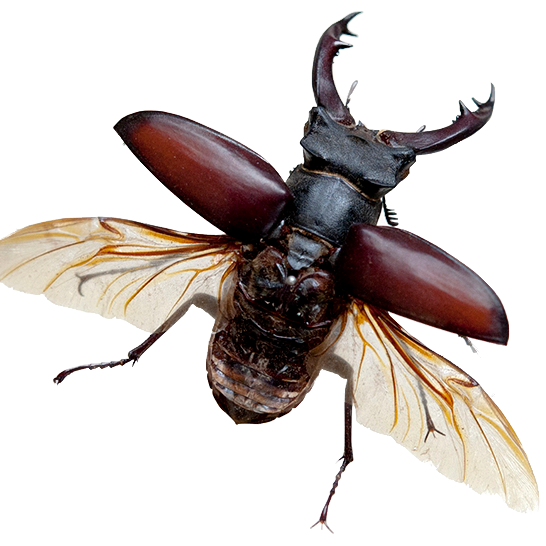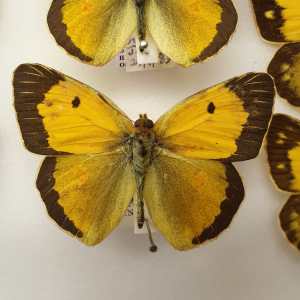Hunt for the Stag beetle
Here is the first contribution from one of our readers. It is a tale from Milo Dawes of his exciting hunt for a stag beetle in Richmond Park, London:
On Sunday 20th June I went to Richmond Park. It was a warm day and I had just been in the car for 45 minutes. When I got there, I saw lots of roe deer, but I had come here to find the biggest beetle in the UK – a greater stag beetle. Here is what you need to know to hunt stag beetles:
- You should look on and around rotting wood and oak trees, especially where the wood has been chewed away.
- Look in spiderwebs for dead lesser stag beetles – the greater stag beetles are strong flyers and can fly out of the webs.

Next to where I was looking there was a family of grazing deer, chewing away noisily. Slowly and quietly, I walked around some bramble to get to some rotting wood. I lifted it up, but found nothing. Sadly, I walked back, this time the other way around. I spotted something move next to the bramble, out of the corner of my eye. It was a greater stag beetle – the biggest I had ever seen.
Greater stag beetles are often spotted flying around at dusk, flying with the tip of their jaws facing the sky, like a swordfish jumping out of the water. Males can grow up to 10cm – nearly as big as my hand. Greater stag beetles have a black head and thorax, reddish-brown antlers and a chestnut brown abdomen. They are endangered and rare because humans make life difficult for them. We build on woodland, and rotting wood is often removed from forests. They are being wiped out at an alarming rate. If you spot one, in London, you can help by going to www.wildlondon.org.uk to record your find.
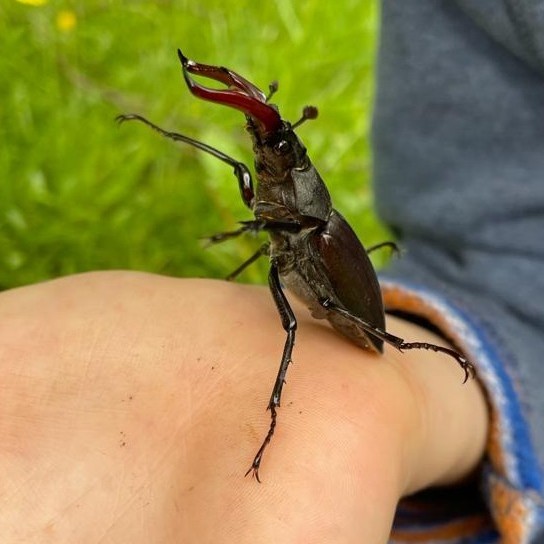
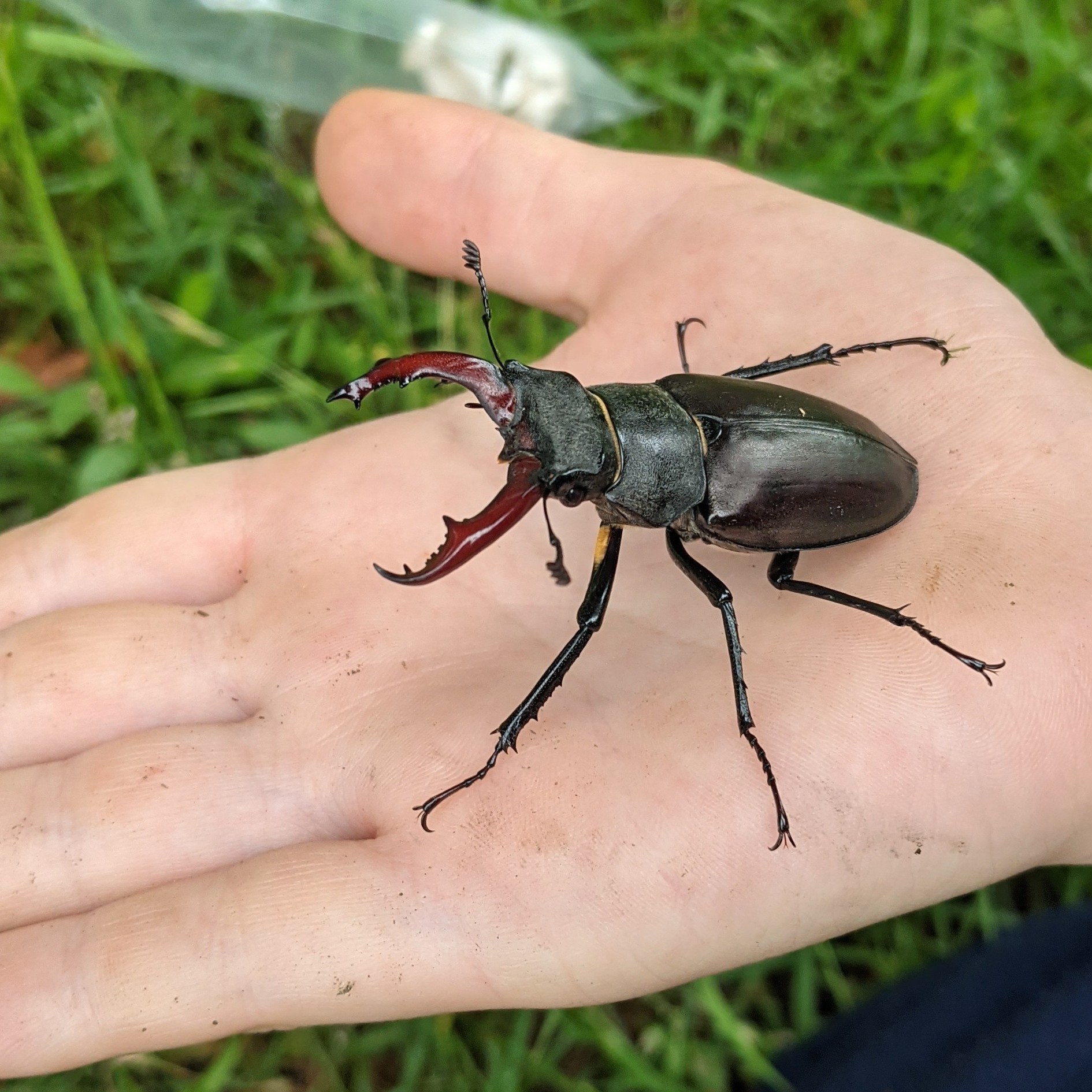
Stag beetle on hand. Image credit: Dawes family
I looked up above me, and there was an ancient oak tree looking very medieval. Then I looked at the stag beetle. It was right next to some rotting wood. I picked it up carefully and ran to a bench. Angrily, the stag beetle waved its antennae at me, and it may have even pointed at me with its claws. The beetle reared up. It was amazing.
Thank you to Milo for this fascinating account. If any of you would also like to write a piece on insects for the blog please contact us or email hopelearning@oum.ox.ac.uk.
Stag beetles are classed as a ‘priority species’, and are protected under the Wildlife and Countryside Act 1981. It is therefore important that you do not remove any from where they are found.


